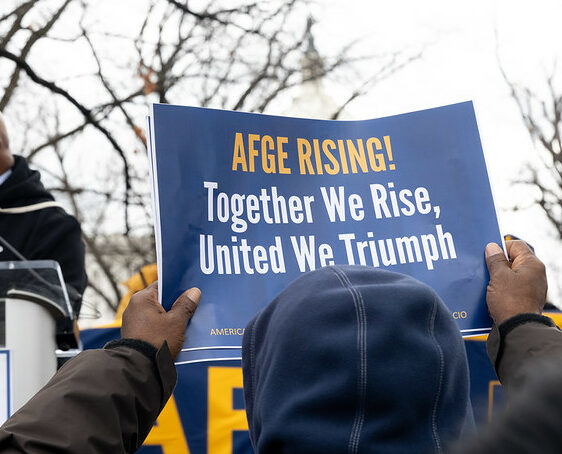In the age of DOGE, the federal bureaucracy faces unprecedented scrutiny. Though the drive for a more efficient government is much deserved, some of the most concerning practices have existed in plain sight for decades.
Though it may not shock anyone to learn that some federal employees aren’t always productive during work hours, many taxpayers would be startled to discover that thousands of government workers perform no work for the government at all.
Under a practice known technically as “official time” — but more accurately described as taxpayer-funded union time — federal employees can be released from their regular duties to engage in labor union operations and activities while receiving their full federal salary and benefits.
In many cases, federal employees serving as union officers spend 100 percent of their workday on “official time,” for years or even decades at a stretch.
The Daily Wire recently reported that a Social Security Administration employee spent 34 years on taxpayer-funded union time without working in the government job for which he was hired. Not only did he collect a federal paycheck throughout his decades working for the union, but, now retired, he receives a lifetime federal pension. So much for public service.
And in some cases, federal bureaucrats on official time aren’t even working for the union.
According to a letter last year from Sen. Joni Ernst, R-Iowa, a Department of Housing and Urban Development employee received a DUI “during the work day” while purportedly “teleworking” on official time. The employee appeared to have been paid for the days spent in jail after her arrest because she was on taxpayer-funded union time.
Unfortunately, these aren’t isolated incidents.
The Office of Personnel Management estimated federal employees spent at least 2.6 million hours on official time in fiscal year 2019, at a cost to taxpayers of $135 million. This was after President Trump sharply curbed taxpayer-funded union time via a 2018 executive order.
Because unions have a right to unspecified quantities of official time under federal statute, the most the president can do without congressional action is implement parameters around its use or, in the case of the Biden administration, crank it to 11.
In his drive to become “the most pro-union president in history,” Biden rescinded Trump’s executive order limiting official time and directed federal agencies to grant unions more taxpayer-funded union time.
Additionally, OPM under Biden stopped releasing periodic estimates of official time use — a practice begun in the late 1990s and continued by presidents of both parties — and even removed a page from its website containing historical data on taxpayer-funded union time.
Thankfully, the public will soon know how much this instance of union favoritism costs taxpayers, as OPM recently directed all federal agencies to report the amount of official time used by their employees in 2024.
While the return to transparency is welcome, Trump has yet to reinstate the limits on taxpayer-funded union time he implemented during his first term.
Reinstating such limits isn’t merely good governance; it could help counter anti-DOGE criticism.
For instance, Sen. Bernie Sanders, I-Vt., excoriated the secretary of Veterans Affairs last month for laying off “1,000 VA employees at a department that is already understaffed.”
If Sanders is genuinely concerned about staffing at the VA, he should support an order returning hundreds of VA personnel from union business to their mission of serving America’s veterans, as occurred during Trump’s first term.
However, given that Sanders and Democrats condemned Trump’s previous limits on taxpayer-funded union time as a “declaration of war” on federal workers, such support seems unlikely. In a choice between American taxpayers and Big Labor, progressives will side with the union bosses every time.


